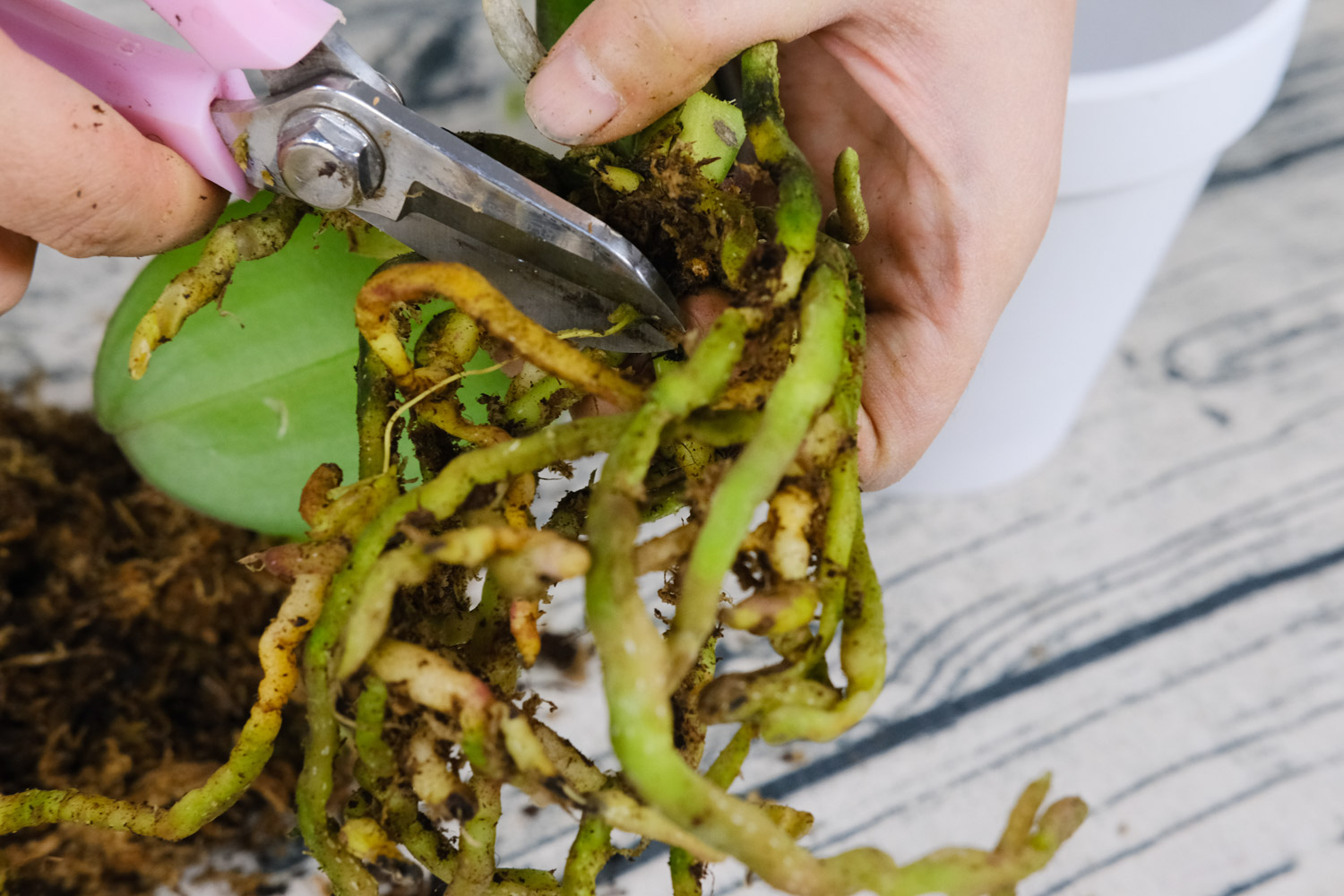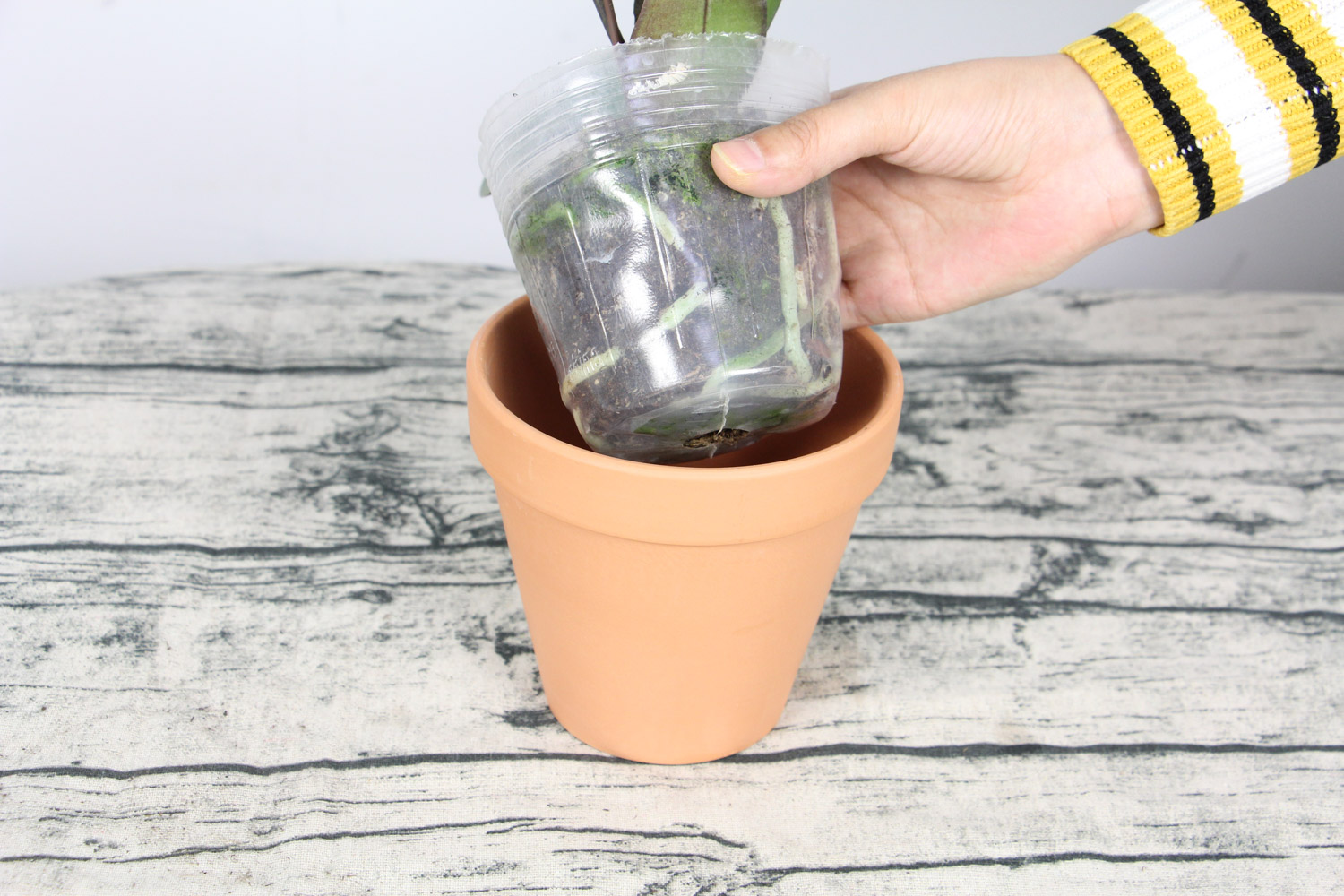1. Check the root system
Uproot the flowering plants, check the root condition, remove all rotten roots and old roots if any, and then soak them in carbendazim solution to disinfect the roots
2. Pruning flower stems
Cut off the flower stem part of the plant, and start pruning from about 5 sections from the flower to the pot soil. Cutting off the flower stem can prevent it from competing for the root or branch part, resulting in unnecessary consumption; If it is not trimmed, it may not bloom again, or the flowers may be thin and small

3. Change the basin in time
The basin shall be changed before April. The drainage layer at the bottom of the basin shall be made with ceramsite, and coarse river sand, rotten leaf soil and vermiculite shall be distributed into planting soil. Be careful not to press the basin too hard
4. Reduce watering
The root system of Phalaenopsis is weak in water absorption and should not be watered too frequently. However, the old root pruning and other treatments after removing the pot lead to weak root system and weak water absorption capacity. Moreover, the flowers in the rest period do not need too much water. If watered too much, it will cause excessive water and easy to lead to rotten roots

5. Increase winter temperature
It is a tropical plant, so it can resist high temperature, but its growth will be affected when the temperature is as low as 10 ℃. It is recommended to breed it in a warm indoor place in winter to prevent frostbite


 how many times do yo...
how many times do yo... how many planted tre...
how many planted tre... how many pine trees ...
how many pine trees ... how many pecan trees...
how many pecan trees... how many plants comp...
how many plants comp... how many plants can ...
how many plants can ... how many plants and ...
how many plants and ... how many pepper plan...
how many pepper plan...































